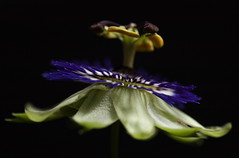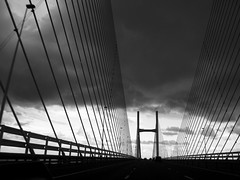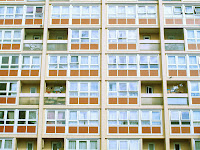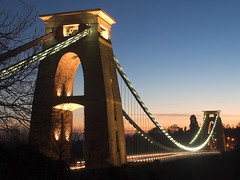
Spirals
Originally uploaded by Nevoir.
I often hear how fellow photographers are going through a dry patch of feel that everything they are taking is rubbish.
It’s the photographers equivalent of the yips. You seem to have lost the ability to see like a photographer and it’s a frustrating experience.
Here’s a few ways that I’ve managed to escape the yips in the past that you might find useful.
Flickr – By joining groups and widening your network on flickr you will continually see great photographs by you peers. This feeling of community is great for getting feedback and encouragement as well as ideas for new ways of shooting.
Podcasts – Do a search on iTunes and you’ll find loads of photo podcasts. I love the Magnum in Motion podcasts. There is something special about seeing photos put to music and a narrative. Try some of these top photo podcasts to brighten up your commute tomorrow.
Magazines – There are loads of photo mags out there and after subscribing to a few I noticed how they seem to recycle the same old articles. They are great however for giving you ideas for photo projects. It may be just what you need to get you back out there.
Books – Just yesterday I picked up “Earth from the air” by Jann Arthus-Bertrand and immediately wanted to grab my camera and head for the hills. Sometimes it’s too easy to forget how inspiring great photos can be.
Get printing – A classic symptom of the digital age is not bothering to print your pictures. Get yourself down IKEA, get some ribba frames and frame up some photos and stand back and admire your photos.
Exhibitions – Exhibitions are great because they often make you realise that you are better than you think! Set yourself that challenge of doing an exhibition in local cafe. Its cheaper and easier than you think and a great learning experience.
DVD’s – After getting the David Noton and Strobist DVD’s I’ve realised what a brilliant medium they are for learning. People learn in different ways but scan YouTube for snippets to see if they work for you.
Expert tuition – I’ve tried a few courses that have ranged from the wonderful “Lakeland Photo Holidays” to rubbish local one run by a wedding photographer who clearly wasn’t interested. These courses can work out expensive but can often push you in a different creative direction and its always refreshing to meet fellow photographers.
Fellow photographers - I'm sure that every photographer has hit a brick wall at some point. Speak to your photo mates and see what has got them out of the doldrums. You may have a favourite photographer to whom you can turn to for inspiration. Check out their latest work and see if it sparks some ideas.
Get shooting – All too often I go out to take some shots and get frustrated that what I’m shooting is rubbish. I think you've got to give yourself a chance as it takes a while to start seeing as a photographer again. Treat it as a warm up. Accept that you will take some rubbish but you if get at least one that’s a keeper then its a case of job done.
If you are stuck in a rut try one of these ideas and let me know if it worked for you!



